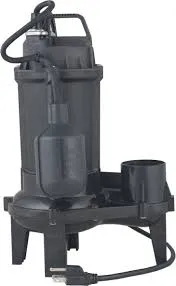English
- Afrikaans
- Albanian
- Amharic
- Arabic
- Armenian
- Azerbaijani
- Basque
- Belarusian
- Bengali
- Bosnian
- Bulgarian
- Catalan
- Cebuano
- Corsican
- Croatian
- Czech
- Danish
- Dutch
- English
- Esperanto
- Estonian
- Finnish
- French
- Frisian
- Galician
- Georgian
- German
- Greek
- Gujarati
- Haitian Creole
- hausa
- hawaiian
- Hebrew
- Hindi
- Miao
- Hungarian
- Icelandic
- igbo
- Indonesian
- irish
- Italian
- Japanese
- Javanese
- Kannada
- kazakh
- Khmer
- Rwandese
- Korean
- Kurdish
- Kyrgyz
- Lao
- Latin
- Latvian
- Lithuanian
- Luxembourgish
- Macedonian
- Malgashi
- Malay
- Malayalam
- Maltese
- Maori
- Marathi
- Mongolian
- Myanmar
- Nepali
- Norwegian
- Norwegian
- Occitan
- Pashto
- Persian
- Polish
- Portuguese
- Punjabi
- Romanian
- Russian
- Samoan
- Scottish Gaelic
- Serbian
- Sesotho
- Shona
- Sindhi
- Sinhala
- Slovak
- Slovenian
- Somali
- Spanish
- Sundanese
- Swahili
- Swedish
- Tagalog
- Tajik
- Tamil
- Tatar
- Telugu
- Thai
- Turkish
- Turkmen
- Ukrainian
- Urdu
- Uighur
- Uzbek
- Vietnamese
- Welsh
- Bantu
- Yiddish
- Yoruba
- Zulu
Telephone: +86 13120555503
Email: frank@cypump.com
Aug . 07, 2024 13:00 Back to list
Comparing Single Suction and Double Suction Pumps for Optimal Performance and Efficiency
Single Suction vs. Double Suction Pumps An Overview
When it comes to designing and selecting pumps for various industrial applications, engineers often face the critical decision of choosing between single suction and double suction pumps. Both types of pumps have their distinct features, advantages, and disadvantages, which can greatly influence their suitability for specific tasks. This article explores the fundamental differences between single suction and double suction pumps, shedding light on their respective characteristics and applications.
Single Suction Pumps
Single suction pumps, as the name implies, have one suction inlet. Fluid enters the pump from one side and is directed through the impeller, where it gains kinetic energy before being discharged. The design is relatively straightforward, which contributes to its cost-effectiveness and ease of maintenance. Single suction pumps are typically used for applications where the flow rates are moderate, and the suction head is manageable.
One of the primary advantages of single suction pumps is their compact design. They are lighter and require less space, making them ideal for installations with limited room. However, a notable downside is that single suction pumps can be prone to cavitation, especially at higher flow rates or with fluids that have low vapor pressure. Cavitation not only reduces the efficiency of the pump but can also lead to physical damage over time.
Double Suction Pumps
In contrast, double suction pumps feature two inlet ports, allowing fluid to enter the pump from both sides of the impeller. This design effectively balances the hydraulic forces acting on the impeller and minimizes axial thrust, which is advantageous for larger pumps operating under high flow conditions. Double suction pumps can handle larger volumes of fluid more efficiently, making them a popular choice in applications such as water supply, irrigation, and industrial processes.
single suction vs double suction pump

The primary benefits of double suction pumps include their capacity for higher flow rates, improved efficiency, and reduced noise levels due to the balanced hydraulic forces. Additionally, the dual suction design tends to extend the operational life of the pump by reducing wear on components. However, this complexity also comes with downsides; double suction pumps are generally larger and heavier, requiring more space and often coming at a higher initial cost. Maintenance can also be more complicated due to the more intricate design.
Factors to Consider in Selection
When deciding between a single suction and a double suction pump, several factors must be taken into account. The required flow rate is a significant consideration; if the application involves high flow rates, a double suction pump may be more suitable. Conversely, for lower flow applications with limited space, a single suction pump can be more practical.
Also, consider the fluid properties. For viscous fluids or applications susceptible to cavitation, a double suction pump may offer better performance. Furthermore, system design aspects such as available space, installation requirements, and budget constraints will also influence the final decision.
Conclusion
Both single suction and double suction pumps have unique advantages and disadvantages that make them suitable for different applications. A clear understanding of your specific needs, coupled with knowledge of each pump type’s characteristics, will help ensure the right choice for optimal performance and efficiency. By carefully assessing factors such as flow rate, space, and fluid type, engineers can make informed decisions that lead to successful operational outcomes.
-
ISG Series Vertical Pipeline Pump - Chi Yuan Pumps Co., LTD.|High Efficiency, Energy Conservation, Low Noise
NewsJul.29,2025
-
ISG Series Vertical Pipeline Pump-Chi Yuan Pumps Co., LTD.|High Efficiency&Energy-Saving
NewsJul.29,2025
-
ISG Series Vertical Pipeline Pump - Chi Yuan Pumps Co., LTD. | High Efficiency, Energy-Saving
NewsJul.29,2025
-
ISG Series Pipeline Pump - Chi Yuan Pumps | High Efficiency, Low Noise
NewsJul.29,2025
-
High-Efficiency Vertical Slurry Pumps for Mining & Industry Solutions
NewsJul.29,2025
-
High-Efficiency Pipeline Pump Solutions for Every Pipeline Pump Station
NewsJul.29,2025










